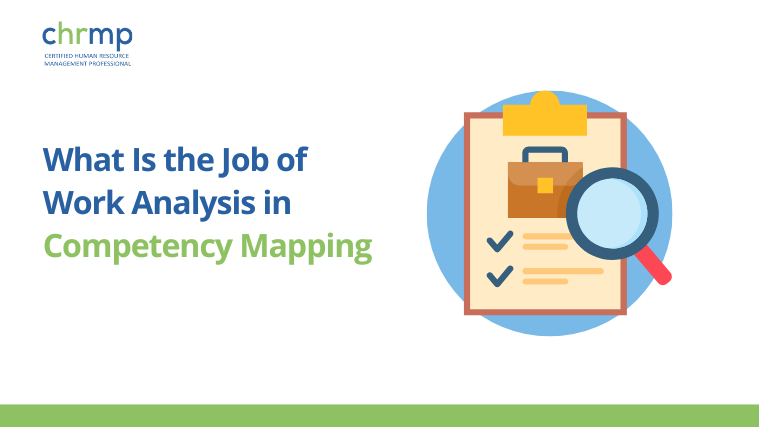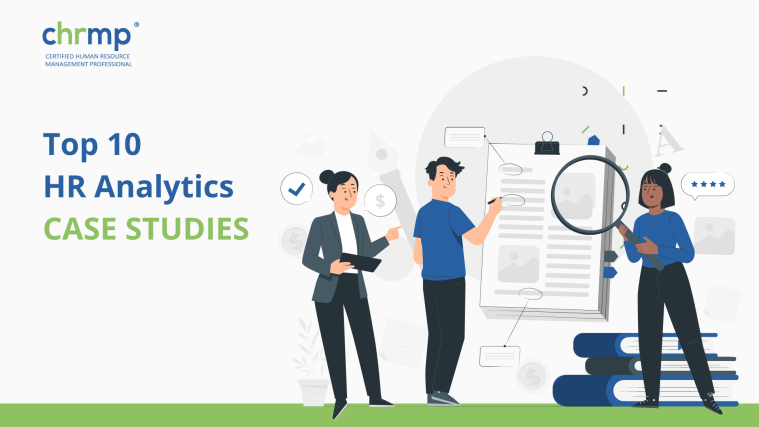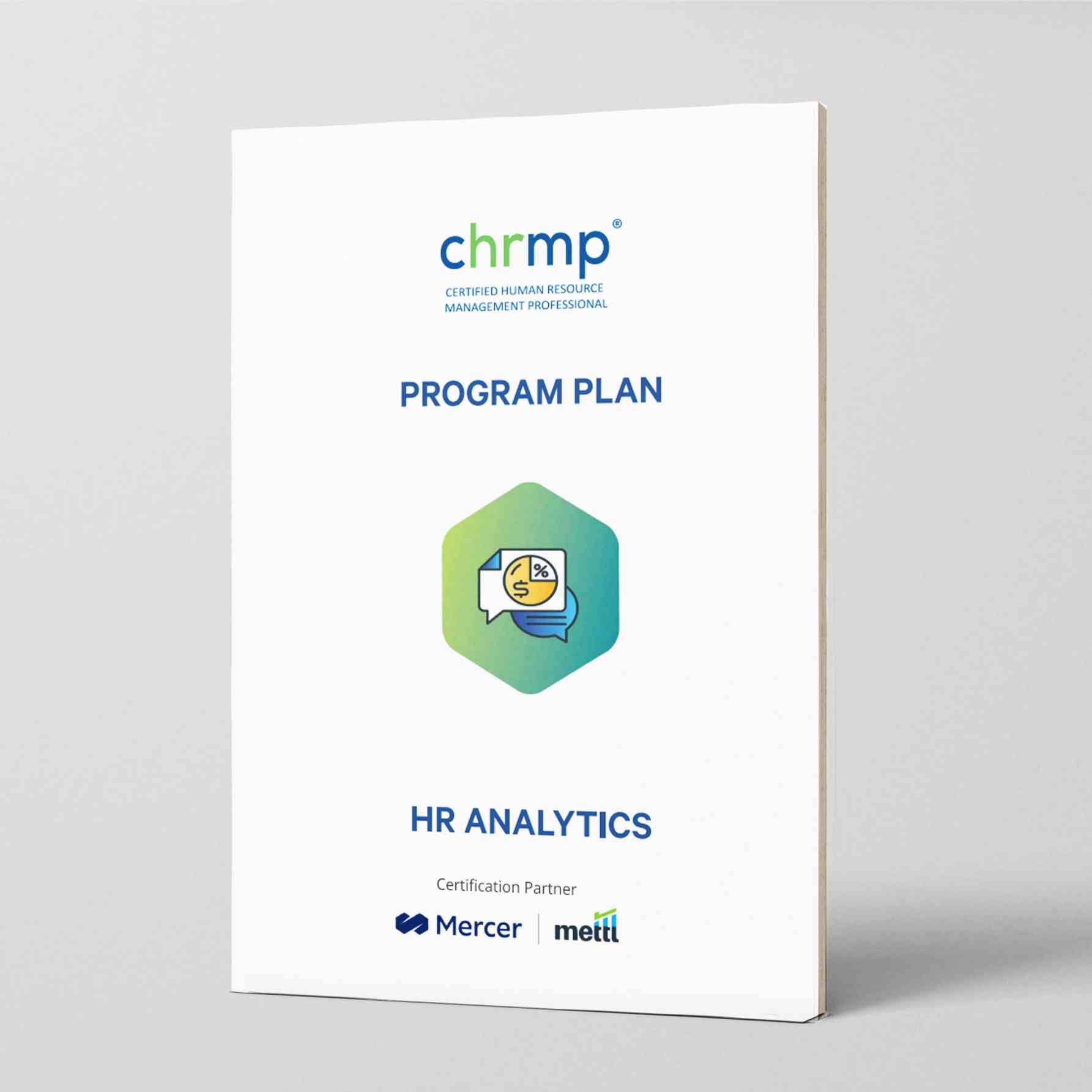

The power of data drives the fast-paced business world today. To stay abreast and ride the competition wave, it is important to harness the power of data. And HR Analytics is just the tool you need. It is a valuable tool to measure critical aspects of your organisation which impact its bottom line.
Whether you’re an HR professional, a business leader, or just someone curious about the role of HR Analytics in the workplace, this blog is for you. We’ll cover a range of industries and organizational sizes, showcasing the diversity of ways HR Analytics can be applied to drive results and also look at some HR analytics case studies.
Curious about how HR Analytics can drive business results? Well, look no further because, in this blog, we’ll be diving into the top 10 HR analytics case studies.
From boosting engagement to improving diversity, inclusion and productivity, these companies have achieved impactful results by leveraging HR data.
So sit back, grab a coffee, and get ready to be inspired!
HR Analytics plays a critical role in modern organizations as it provides valuable insights into the people side of the business. With HR Analytics, organizations can track key metrics such as turnover, diversity and inclusion, and employee satisfaction, allowing them to identify areas for improvement and make data-backed changes.
Furthermore, HR Analytics can help organizations stay ahead of the curve by providing real-time insights into their HR practices, drives and campaigns, allowing them to respond quickly to emerging trends and challenges. Organizations can also design and implement more effective HR initiatives by leveraging HR data, such as training and development programs and talent management strategies.
In short, HR Analytics is essential for modern organizations looking to drive business results through their people. By providing a data-driven approach to HR, organizations can make informed decisions to improve employee outcomes and significantly impact the company’s bottom line.
In today’s data-driven business world, organizations increasingly turn to HR Analytics to drive impactful changes and improve their people strategies.
An effective HR Analytics strategy begins with a clear plan outlining the steps to achieve our goals.
Here are the three basic steps in an HR analytics strategy:
The first step is to define the problem or challenge you are trying to solve. This involves identifying areas in your organization where we need insights, such as employee turnover, diversity and inclusion, or employee engagement.
A clear problem statement helps to focus efforts and ensure that your HR Analytics strategy aligns with your overall business objectives and goals.
The next step is to determine the approach we will use to gather and analyze HR data. This involves selecting proper HR metrics to track and the tools and technologies to determine how we will collect and store our HR data. Our approach should align with our organizational culture and objectives.
The final step is to analyze and interpret the results of our HR Analytics efforts. This involves evaluating the impact of our HR initiatives, drives or campaigns and identifying areas for improvement. Communicating the results of our HR Analytics efforts to stakeholders within the organization is the key to gaining buy-in and support for future initiatives. By regularly tracking and reporting on HR metrics, organizations can continue to improve their HR practices.
In conclusion, these three steps – problem statement, approach and solution, and results – form the foundation of an effective HR Analytics strategy.
By following this process, organizations can ensure that their HR Analytics efforts align with their business objectives and drive meaningful impact for their people and businesses.
HR Analytics is a powerful tool to help organizations make informed decisions about their HR or people strategies. By analyzing data related to employee behavior, organizations can identify trends and make changes that improve outcomes from employees.
Here we will discuss ten HR Analytics case studies demonstrating the impact of data-driven HR strategies.
Here’s a list of the top 10 HR analytics case studies:
A transportation company used HR Analytics to reduce road traffic accidents among its drivers. By analyzing data related to driver behavior and providing appropriate training to them, the company was able to identify and address the root cause of accidents and improve safety on the roads for every one.
A manufacturing company used HR Analytics to optimize its staffing levels, reducing turnover, curbing absenteeism and sabbaticals and improving employee engagement and satisfaction. The company used data to track key metrics such as employee satisfaction, productivity, engagement and attendance, allowing it to make informed decisions about staffing levels .
A technology company used HR Analytics to test the effectiveness of its employee training programs. By using A/B testing, the company was able to determine which training methods were most effective and made improvements to the same, ultimately improving employee performance and engagement and curbing absenteeism at the same time. If the employees feel that the company is interested in their career development, growth and overall well being, this sentiment shows on their attendance records and performance .
Next, on our list of top ten HR analytics case studies is E.ON.
E.ON, a leading energy company, used HR Analytics to reduce the number of employee sick days.
By analyzing data related to employee health, the company identified the root cause of employee absenteeism which was ill health and implemented targeted interventions to improve employee wellbeing.
Clarks, a leading footwear company, used HR Analytics to improve employee engagement and retention. By tracking key metrics such as employee satisfaction, absenteeism, sabbaticals and turnover, the company was able to identify areas for improvement and make changes that led to higher levels of employee engagement , retention, reduction in turnover and absenteeism which in turn boosted employee and organisational performance .
Shell, a global energy company, used HR Analytics to improve employee engagement and retention. By tracking employee satisfaction, absenteeism and turnover, the company was able to identify areas for improvement and implement targeted interventions, resulting in higher levels of employee engagement ,reduction in employee turnover and increase in their productivity and performance.
A retail company used HR Analytics to link HR practices with store performance. By tracking key metrics such as employee satisfaction, absenteeism, sick leave records and employee turnover, the company was able to identify the relationship between HR practices and store performance and make vital data driven changes in its people strategies.
Clarks deserves another spot in our top ten HR analytics case studies list because of it’s compensation and benefits.
Clarks used HR Analytics to optimize its compensation and benefits programs as compared to similar outfits in the industry. By analyzing data related to employee compensation and benefits, the company was able to make informed decisions about its programs and improve employee satisfaction and retention by improving compensation and benefits as compared to others in the same industry.
Cisco used HR Analytics to open a new office in a new location. By analyzing data related to employee locational preferences and commuting times, the company was able to make informed decisions about the venue of its new office .
Using automated listening during a hostile takeover and HR Analytics to understand employee sentiment during the same and by tracking employee engagement and satisfaction, the company was able to identify areas of concern and address them, ultimately improving employee morale and outcomes and reducing the impact of the takeover on the company’s workforce.
In conclusion, these HR Analytics case studies demonstrate the real-world impact that data-driven HR strategies can have on employee outcomes and business results. A major takeaway from these HR analytics case studies is that by using HR Analytics, organizations can make informed decisions about their people strategies, ultimately improving employee satisfaction and driving business success.
The future of HR analytics is likely to be shaped by a number of emerging trends and technologies. Here are a few key areas to watch:
The new emerging trends and technology that are going to shape the future of HR Analytics are listed below:
The emphasis is on using predictive analytics to forecast future trends and identify potential areas of risk or opportunity as business outfits strive to be more proactive and agile with respect to their HR decision-making. Large volumes of data has to be analysed to identify patterns and trends, and using machine learning algorithms to make predictions based on historical data i.e . extrapolation of data.
HR analytics is likely to be one of the areas that benefits the most as AI technologies continue to advance. Automatation of many tasks can be achieved using AI in HR analytics, such as data collection, cleaning, and analysis, freeing up HR professionals to focus on more strategic tasks. AI can also help identify and extrapolate data patterns and trends that might be difficult or impossible for humans to spot.
As organizations seek to create more engaging and fulfilling workplace experiences for their employees, there is likely to be an increased emphasis on using HR analytics to measure and enhance the employee experience. This could involve analyzing data on employee satisfaction, engagement, retention and productivity or turnover and absenteeism using which more effective training programs and policies can be designed.
As HR analytics becomes more sophisticated and integrated with other business functions, it is likely to become an even more powerful tool for driving business performance to greater heights. This could involve integrating HR analytics with financial, marketing, or supply chain analytics, for example, to gain a more comprehensive view of organizational performance as a whole.
In conclusion, the future of HR analytics is likely to be characterized by greater use of advanced technologies like AI, a focus on strategic data-driven decision-making, and a more holistic approach to understanding and enhancing the employee experience.
In conclusion, the use of HR Analytics has become increasingly important in modern organizations as they strive to make data-driven decisions about their people strategies.
The top 10 HR Analytics case studies demonstrate the tangible impact of data-driven HR strategies on employee outcomes and business results. From reducing road traffic accidents to improving employee engagement and retention, these HR analytics case studies show how organizations can use HR Analytics to make informed decisions about their people strategies and drive business success.
By using HR Analytics, organizations can gain a deeper understanding of their workforce and make changes towards better competitive compensation and benefits packages , providing better training development opportunities for career growth and medical well-being, resulting in a more engaged, productive, and productive, and satisfied workforce.
We hope you found inspiration from our list of HR analytics case studies.
© 2007-2025 CHRMP| All Rights Reserved | Powered by Ripples Learning & Research Private Limited

Fill in the below details to get a CHRMP HR Analytics Program Plan.
